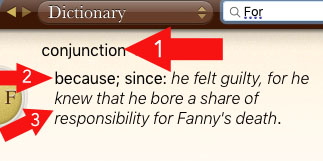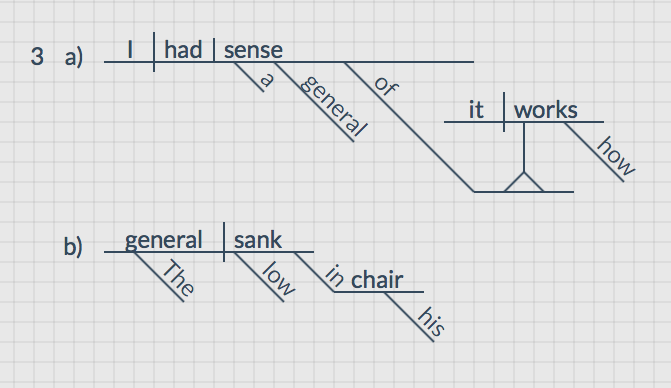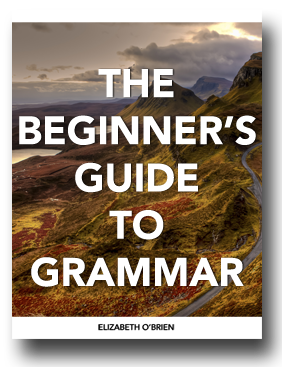What part of speech is this?
What part of speech is this?
- Home
- Parts of Speech
- What part of speech is this?
If you've ever found yourself wondering what part of speech something is, this lesson is for you! In this lesson, we'll explore how to answer that question as well as why that answer can seem a bit confusing. You'll also find a quiz so that you can test yourself. Jackpot!
Would you like to have this lesson at your fingertips?
Download the $1 study guide.
Pop quiz, hot shot! Let's say you're at the grocery store deciding between chunky and creamy peanut butter (tough choice) when someone walks up to you and asks, "What part of speech is the word love?"
***Psst! If you don't know what the parts of speech are, you should start with our free ebook The Beginner's Guide to Grammar.***
Obviously, the first thing to do is run away from this person. But then, your mind might linger on that question, and you might start to wonder Hmm ... what part of speech is the word love anyway?
At that point, you would probably think of some example sentences to figure it out.
I love peanut butter.
From this sentence, you might conclude that love is a verb since you know that verbs express action, and love is showing an action in this sentence.
You wouldn't be wrong, but then you might think of this sentence:
Love for peanut butter brought me to the store today.
Wait a minute! Here, love is a noun. It's an idea, and it's the subject of the sentence. What's the deal? How can love be a verb and a noun?
Here's a secret about the parts of speech that many people don't realize:
Many words can function as more than one part of speech.
They will only be doing one part-of-speech job at a time, though. In our example sentences above, we can see that love can be a verb and a noun, and we can also see that it's doing just one of those jobs in each sentence.
How can you figure out what part(s) of speech a word can be, and how will you know what the word is acting as in any given sentence?
The first thing to do is to study the parts of speech and understand how they work.
Here's what you can do after you have a sense of what the parts of speech are and how they work:
What part(s) of speech can this word be?
Look up the word in a dictionary. Dictionaries will show you the possible parts of speech that a word can function as. You can use a dictionary that's an actual book, an online dictionary, or your device's built-in dictionary. The dictionary will list each word's possible part of speech, and it will give you definitions for all of the meanings of a word within each part of speech.
What part of speech is this word in this sentence?
In order to figure out how a word is functioning, we need to look at the word within the context of a sentence. Look over your sentence, and then open up your dictionary. Match the meaning of the word in your sentence with the most fitting dictionary definition. Then you'll be able to tell what part of speech it is in your sentence.
Let's look at two examples of words acting as different parts of speech.
We'll look at the words for and iron, and we'll see them acting as different parts of speech. We'll also take a peek at what the dictionary says for each word.
What part of speech are the words in bold?
I asked for pie.
I cried, for I knew that the pie was gone.
Where is the iron?
Please iron my shirt.
For
I asked for pie. (preposition)

1. Just below the word that you look up, you'll find a listing for a part of speech. The first listing is usually the most common way that the word is used. For is most commonly used as a preposition.
2. Next, you'll find definitions of the word for each part of speech. If there is more than one definition, they'll be numbered. There are many definitions for for as a preposition, and here you can see two.
3. After the definition, you'll often find an example of how to use the word as that part of speech and definition. You can see the examples in italics.
I cried, for I knew that the pie was gone. (conjunction)

1. Below all of the definitions for for as a preposition, we can see a listing for another part of speech. It's here that we see that for can also be a conjunction.
2. Here's the definition. It's not numbered because there is only one entry for for as a conjunction.
3. Here is an example sentence for us. (It's strange, though, that they also used for as a preposition in this example as well as a conjunction!)
Iron
Where is the iron? (noun)

1. The first part of speech listed under iron is noun.
2. The first two definitions of iron as a noun weren't the ones used in the sentence above, but the third entry was what I was looking for.
3. They don't give us an example sentence. Boohoo!
Please iron my shirt. (verb)

1. Underneath all of the definitions for iron as a noun, I came here which let me know that iron can also be used as a verb.
2. There's only one definition for iron as a verb, so they didn't number this entry.
3. Again, there's no example sentence. Perhaps everyone at the dictionary company called in sick on the day that they had to write example sentences for iron.
Test Yourself
I. Label the Parts of Speech
Directions: Name the part of speech for the underlined word in each sentence. Use a dictionary if you need one. For extra credit, diagram the sentences. :) Scroll down to see the answers.
1. LIGHT
a) I will light the fire.
b) Can you see that red light?
c) This light jacket isn't warm enough.
2. FAST
a) Hadley is a fast runner.
b) The 12-hour fast cleared my mind.
c) He drives fast!
3. GENERAL
a) I had a general sense of how it works.
b) The general sank low in his chair.
4. BEFORE
a) Practice piano before you play with your friends.
b) Practice piano before dinner.
5. ROLL
a) Roll the dice.
b) I will eat the soup with a roll.
6. LIKE
a) I like old books.
b) They acted like old friends.
c) The boys had like interests.
7. TILL
a) The kids were awake till midnight.
b) Open the till and count the money.
c) My grandpa, a farmer, would till his soil in the spring.
8. CUP
a) Cup your hands around your mouth and yell.
b) I'll use the red cup.
9. DRIVE
a) The long drive through the countryside lifted my spirits.
b) I always drive within the speed limit.
10. BLUE
a) Everyone in the family photo wore blue.
b) Jackie lives in the blue house.
Would you like to download this lesson?
II. Write Your Own Sentences
Directions: Write your own sentences using the words below. Make sure the word is being used as the part of speech indicated on the left side. Underline the word in your sentence. The first one is done for you. Feel free to use a dictionary!
1. Drive
Noun: The long drive through the countryside lifted my spirits.
Verb: I always drive within the speed limit.
2. Baby
Noun: ___________________________________
Adjective: ________________________________
Verb: ___________________________________
3. Up
Preposition: ________________________________
Adverb: ___________________________________
Answers
I. Label the Parts of Speech
1. LIGHT
a) I will light the fire. VERB
b) Can you see that red light? NOUN
c) This light jacket isn't warm enough. ADJECTIVE

6. LIKE
a) I like old books. VERB
b) They acted like old friends. PREPOSITION
c) The boys had like interests. ADJECTIVE

2. FAST
a) Hadley is a fast runner. ADJECTIVE
b) The 12-hour fast cleared my mind. NOUN
c) He drives fast! ADVERB

7. TILL
a) The kids were awake till midnight. PREPOSITION
b) Open the till and count the money. NOUN
c) My grandpa, a farmer, would till his soil in the spring. VERB

3. ABOVE
a) I had a general sense of how it works. ADJECTIVE
b) The general sank low in his chair. NOUN

8. CUP
a) Cup your hands around your mouth and yell. VERB
b) I'll use the red cup. NOUN

4. BEFORE
a) Practice piano before you play with your friends. CONJUNCTION
b) Practice piano before dinner. PREPOSITION
9. DRIVE
a) The long drive through the countryside lifted my spirits. NOUN
b) I always drive within the speed limit. VERB
5. ROLL
a) Roll the dice. VERB
b) I will eat the soup with a roll. NOUN
10. BLUE
a) Everyone in the family photo wore blue. NOUN
b) Jackie lives in the blue house. ADJECTIVE
* The sentence diagrams for 4, 5, 9, and 10 are available in the downloadable version of this lesson.
Answers for II. Write Your Own Sentences are also available in the free, downloadable version of this lesson.
Would you like to download this lesson?
Would you like to see another example of this concept? Let's look at how the word balance can be a noun or a verb, and how it can help you think about your life.
This is original content from https://www.english-grammar-revolution.com/what-part-of-speech.html
Our Free Guide Gives You A Fun Way
To Teach And Learn The Basics v

Elizabeth O'Brien is the creator of Grammar Revolution.
Her lessons are guaranteed to give you more confidence in your communication skills and make you smile. :)
Other Helpful Resources
- I used the website https://www.letsdiagram.com to make my sentence diagrams.



